Etta James had a voice.
Not just any voice, but the kind that feels like unearthing a rare diamond—one that transforms an ordinary person into a legend, etched forever in music history.
In 1975, at 37 years old, Etta took the stage at the Montreux Jazz Festival. It was her first time performing in Europe, far from her early days of singing blues in a small Baptist church choir.
Her rendition of “I’d Rather Go Blind” that night became something more than a performance—it became a rebirth. Pausing to wipe her brow and laugh with the band, she seemed to remake the song in real time, drawing on the raw energy of the room. At several points in the performance, she pulled the microphone away entirely, yet her voice filled every inch of space, reaching beyond the depths of her vocal cords, serving the public from her soul.
Watching the recording of her performance nearly 50 years later gives me goosebumps. It was said to be the highlight of the Montreux Festival that year, and perhaps a highlight of the festival’s history.
- When and where
- History of the Montreux Jazz Festival
- The story of ‘Smoke on the Water’
- Where to stay in Montreux, Switzerland
- Beyond the Montreux Jazz Festival: Things to do in Montreux, Switzerland
- Learn about Queen in their former recording studio
- Ride aboard the luxurious GoldenPass train through the Swiss Alps
- Taste rare Swiss wine at the UNESCO-awarded Lavaux Vineyards
- Explore the eerie dungeon of the Château de Chillon
- Cruise across the lake in a turn of the century steamboat
When and where
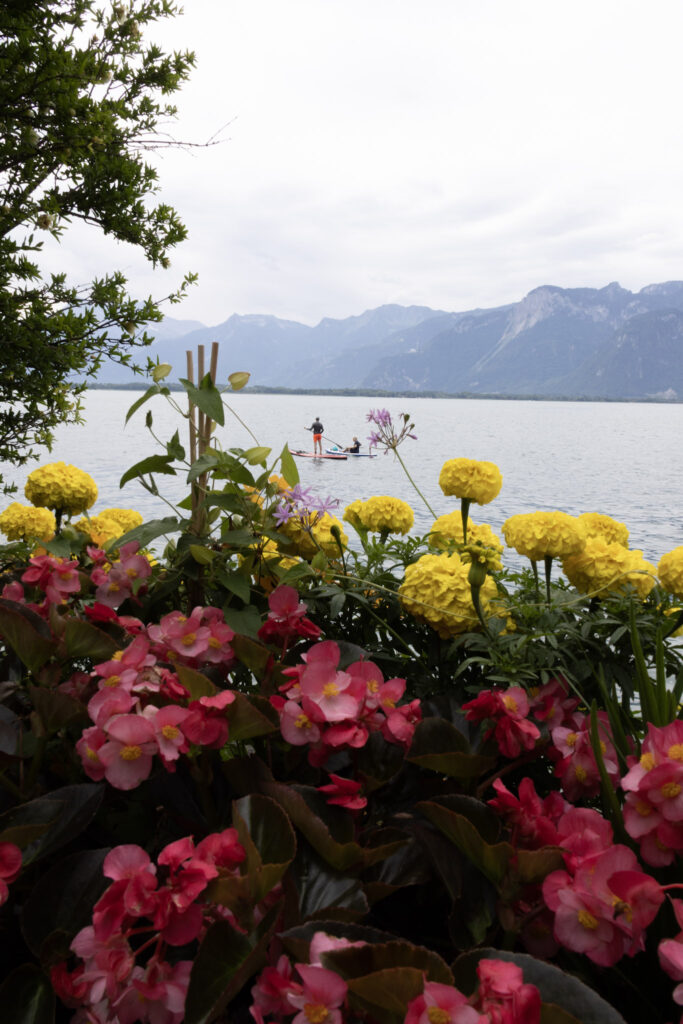

Quincy Jones once called the Montreux Jazz Festival the Rolls Royce of festivals. A place where great artists go once they’ve reached a certain level of success. It’s a place where people go not to be seen (e.g., Coachella), but to be surrounded by incredible music.
The festival takes place each year during the first two weeks of July in Montreux, Switzerland, a small town on the shores of Lake Geneva. While this year’s festival is in full swing, dates in 2026 fall between 3-18 July.
The program for the festival is typically announced towards the end of March or early April. A full program and festival updates may be viewed here.
It is highly advised to travel to the festival by train (from Geneva, trains to Montreux are nearly every 20 minutes), as parking becomes a difficult task when faced with large festival crowds.
History of the Montreux Jazz Festival
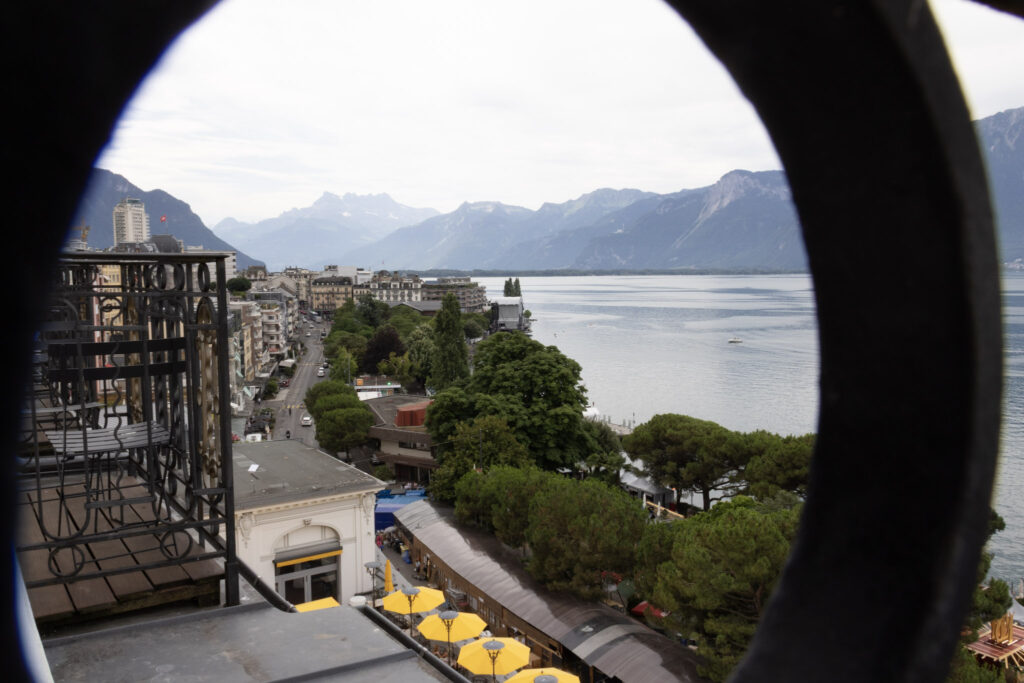
Before 1967, Montreux was known as a sleepy town hidden among the Swiss Alps, visited from afar by English ladies of a certain age and social class. Montreux was seen as breathtakingly beautiful, but leaving visitors bored nearly to tears.
This was observed by a young Montreux-native, Claude Nobs, who, after graduating culinary school, landed a job as an accountant at a local tourism office.
His window to the world beyond the Alpine peaks was a jazz radio station called Pour ceux qui aiment le jazz, hearing the sweet melodies of legendary artists Ray Charles, John Coltrane and Aretha Franklin.
When his idea to host a jazz festival at small casino was warmly welcomed, Claude took it a step further: he decided to visit Atlantic Records in New York City himself, with a plan to invite those artists who he listened to on the radio from his faraway Alpine village.
Without an appointment, Claude Nobs showed up at Atlantic Records in New York City, hoping to speak with executive Nesuhi Ertegun. In his French-accented English, he explained to the receptionist that he had come all the way from Switzerland. Just then, from behind a slightly open door, Ertegun overheard Claude’s plea. By a remarkable coincidence, Ertegun’s father had once served as the Turkish ambassador to Switzerland—based in Bern. He stepped out with a warm “Grüezi,” the Swiss German word for hello. The connection was instant. Not long after, Atlantic Records agreed to send their artists to perform at the very first Montreux Jazz Festival.
In the late 1960s, the music industry was more mom-and-pop. Claude would pick up musicians upon their arrival at the airport, and needed equipment could be borrowed from nearby shops. Switzerland kept up its reputation of leaving stars at peace from the press.
“The artist isn’t like an animal in a cage,” Claude said in the documentary “They All Came Out to Montreux” (available for free in Switzerland on Play Suisse, in the UK via the BBC, or to purchase on Apple TV).
Indeed, Claude did not want Montreux to feel like another gig on tours throughout Europe, but rather a retreat where artists could relax and recharge and gather inspiration to write music.
He encouraged Queen to take advantage of Mountain Studios located in the local casino. They took him up on the idea, and asked David Bowie to join them in a two-hour jam session that resulted in the iconic track “Under Pressure”.
Claude regularly invited musicians to his mountain chalet and put his culinary talents to work. Footage of Claude shows him helping Miles Davis to pick out his jacket before a show. Artists often returned to perform concerts at the Montreux Jazz Festival (Herbie Hancock has famously played in Montreux 30 times).
Instead of outgrowing his hometown, Claude Nobs made a way for Montreux to grow around him, putting the city on the international map.
The story of ‘Smoke on the Water’
Five years into its making, the casino that had provided the intimate space needed for the Montreux Jazz Festival went up in flames.
British band Deep Purple was in town to record their next album “Machine Head” in a mobile studio borrowed from the Rolling Stones. Before recording, they joined a crowd at a Frank Zappa concert, where a fan famously launched a flare gun which ignited the ceiling into flames.
Luckily no one was seriously injured, however the incident left Claude in a panic to find a new recording studio. He quickly found a space at a hotel in a nearby village, having closed for the winter.
The next morning, Deep Purple’s bassist Roger Glover (who, funnily enough, fell in love with a Swiss air hostess and moved to Switzerland later in life), woke up with a song in his head:
“Frank Zappa and the Mothers
Were at the best place around
But some stupid with a flare gun
Burned the place to the ground.”
The song “Smoke on the Water” became one of Deep Purple’s signature songs, and an eternal anthem for the Montreux Jazz Festival.
Where to stay in Montreux, Switzerland
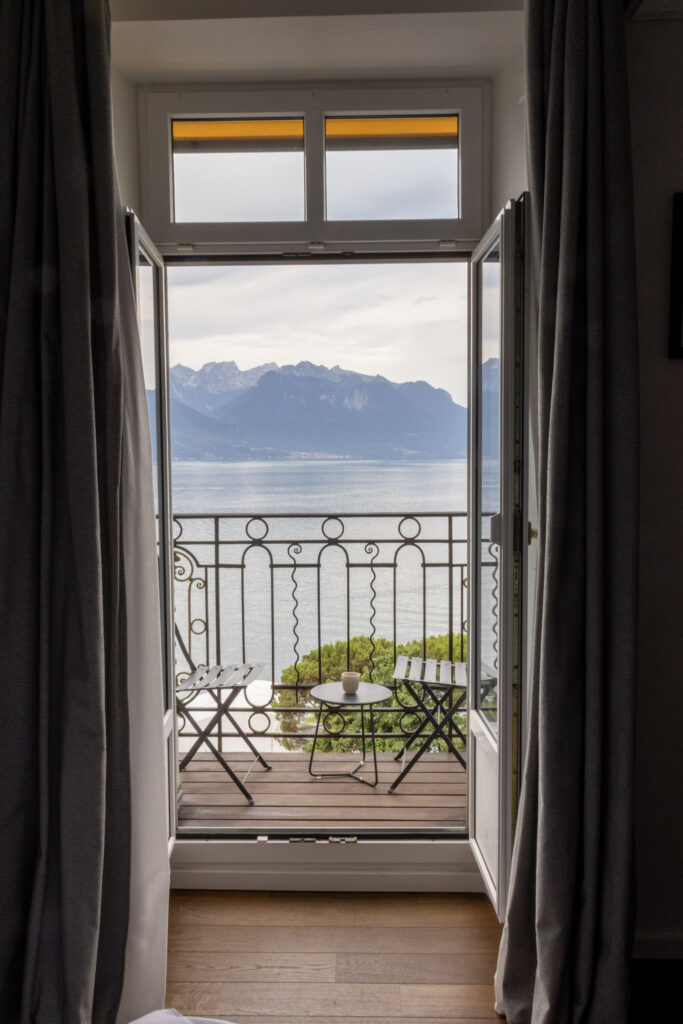
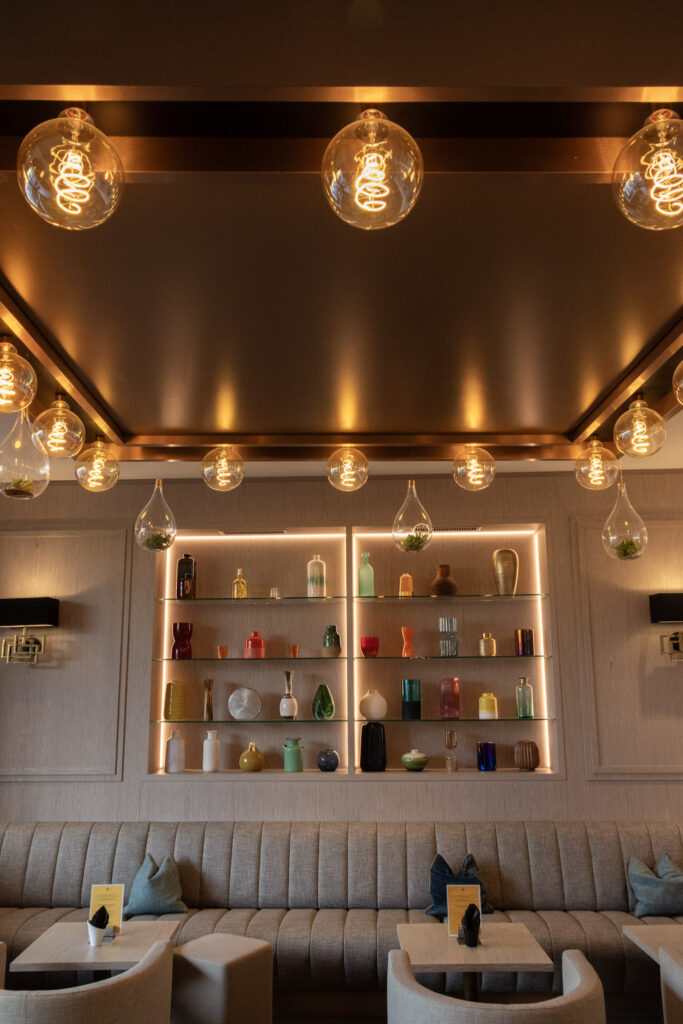
One of the most unique aspects of the Montreux Jazz Festival is the calm before the storm. By day, the lakeside promenade feels relaxed, with a gentle flow of visitors wandering between food stalls and pop-up stages. But by night, the sleepy town comes alive—its pathways packed shoulder-to-shoulder with music lovers, drifting between free concerts, impromptu dance parties, and sold-out shows.
Those in Geneva often book a train to and from Montreux to see a show or two before heading directly home. Over the past couple of years, my husband and I have made the Montreux Jazz Festival a yearly tradition- staying overnight to take in the unique atmosphere and act like tourists near home.
The key to staying overnight in Montreux is to book accommodation as early as possible. Some book apartments a year out in advance. Many hotels, such as the Grand Hotel Suisse Majestic, do block bookings well over a year in advance for musicians. We found an available room on the 7th floor of this luxurious hotel (well worth the splurge when visiting Montreux!), only to find out the next day on social media that Seu Jorge, the Brazilian artist we came to Montreux to see, was in breakfast earlier that morning downstairs while we soundly slept!
Last year, we stayed at a 4-star hotel that is equally luxurious and slightly cheaper, the Hotel Eden Palace. In terms of prices of hotels in Switzerland, both the Suisse Majestic and Eden Palace are a splurge, as Montreux is tiny, with an increased demand in accommodation during festival season.
For less expensive hotels, check out nearby cities such as Vevey or Lausanne, and take the train into Montreux for the day. Trains are frequent during the Montreux Jazz Festival, and do not require advanced booking.
Beyond the Montreux Jazz Festival: Things to do in Montreux, Switzerland
Learn about Queen in their former recording studio
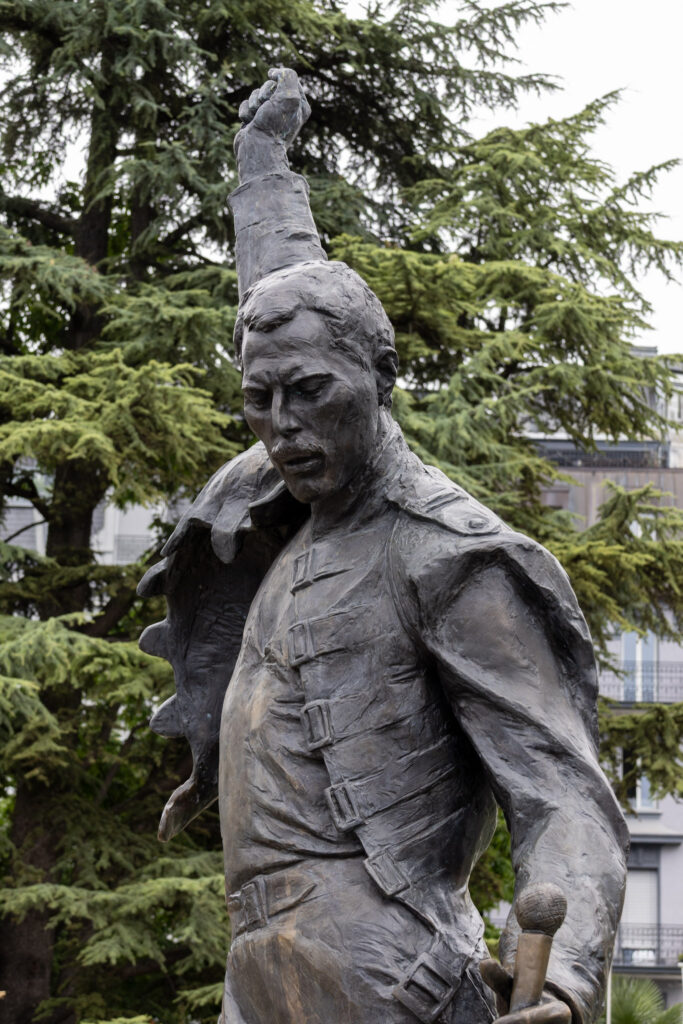
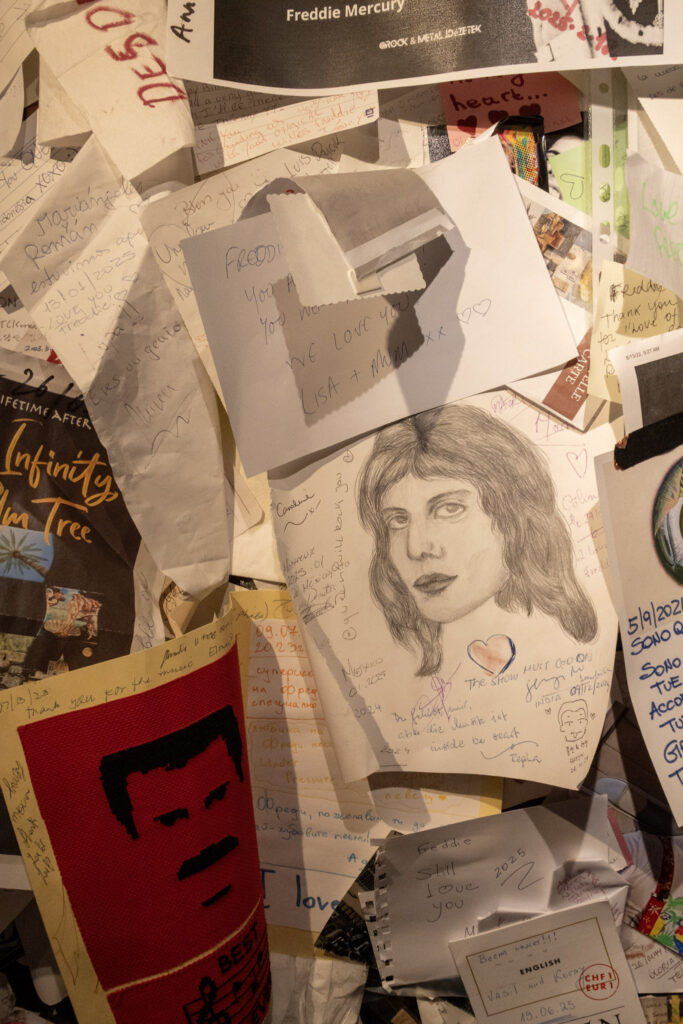
Many Queen fans flock to Montreux, where the band owned Mountain Studios from 1979 to 1993, and recorded seven albums. Freddie Mercury initially found Montreux a bit bland, making jokes of wanting to chuck the studio to the bottom of the lake. The sleepy town did eventually grow on him, and he later found himself with a property nearby which he nicknamed “the duck house”.
The Queen Studio Experience is an exhibition dedicated to the band Queen, located in the area where Mountain Studios once stood. Not widely advertised and with donation-based entry costs, visitors can peer into the control room which has remained largely untouched, and marvel at Freddie Mercury’s extravagant stage attire, including his handwritten song lyrics.
“You probably know what I’m suffering from, but I don’t want to talk about it,” Queen member Brian May recounts Freddie as saying in a documentary shown within the band’s former studio. “I just want to make music until the day I die. So, let’s get on with it.”
Queen knew that Freddie’s days were numbered and did significant recording before his passing. “I will give it my all,” Freddie is quoted as saying. “I will leave you with as much material as I possibly can.”
A day before his passing, a press release was published confirming that Freddie had been diagnosed with HIV and was suffering from AIDS-related complications. The band pieced together recordings of Freddie’s voice, imagining what he would and would not have liked. The result was the album “Made in Heaven”.
The band also set up the Mercury Phoenix Trust, which supports many grassroots organizations advancing HIV/AIDS education and prevention. More information about the Mercury Phoenix Trust’s work or ways to donate may be found online here.
Ride aboard the luxurious GoldenPass train through the Swiss Alps
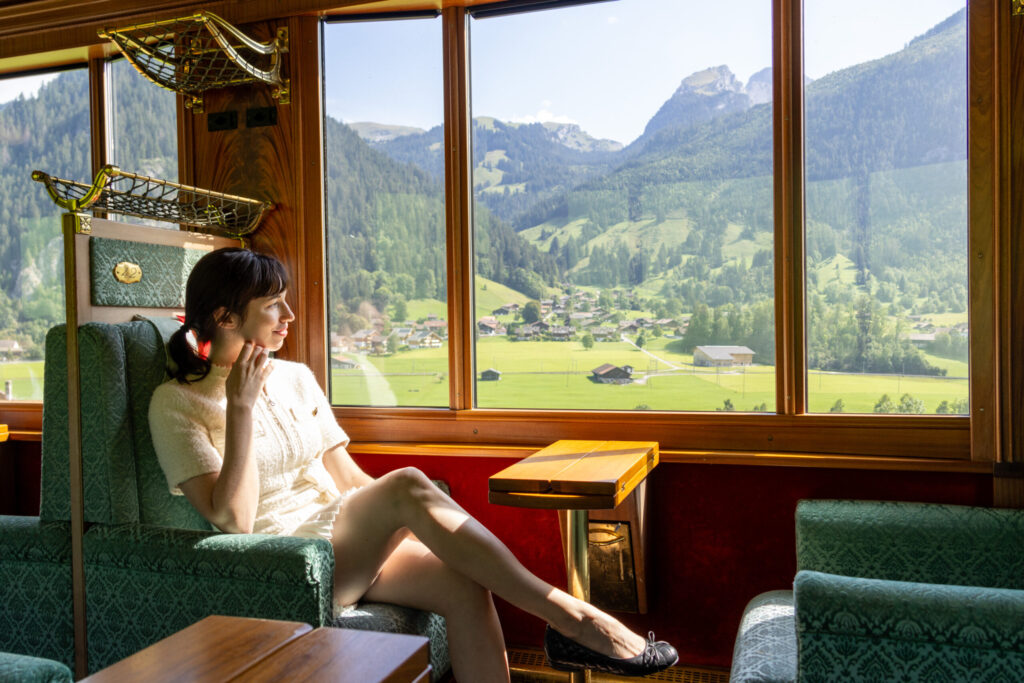
Riding the GoldenPass Belle Époque is like stepping into a mystery novel solved by none other than Hercule Poirot himself.
The gleaming oak ceiling and plush emerald-colored cushioned seats were constructed in 2005 to give our 21st century minds a glimpse into the glorious, albeit brief, period of the original railway from Montreux to Interlaken.
The train runs twice a day between Montreux and the Swiss-German speaking village of Zweisimmen. The journey takes a little over two hours one-way.
Fun fact: you can get a FREE first-class train ticket on the GoldenPass Belle Époque train on your birthday, upon presentation of a form of ID (read more about this offer here).
A complete list of unique train experiences aboard the GoldenPass, along with online reservation options, is available here.
Taste rare Swiss wine at the UNESCO-awarded Lavaux Vineyards
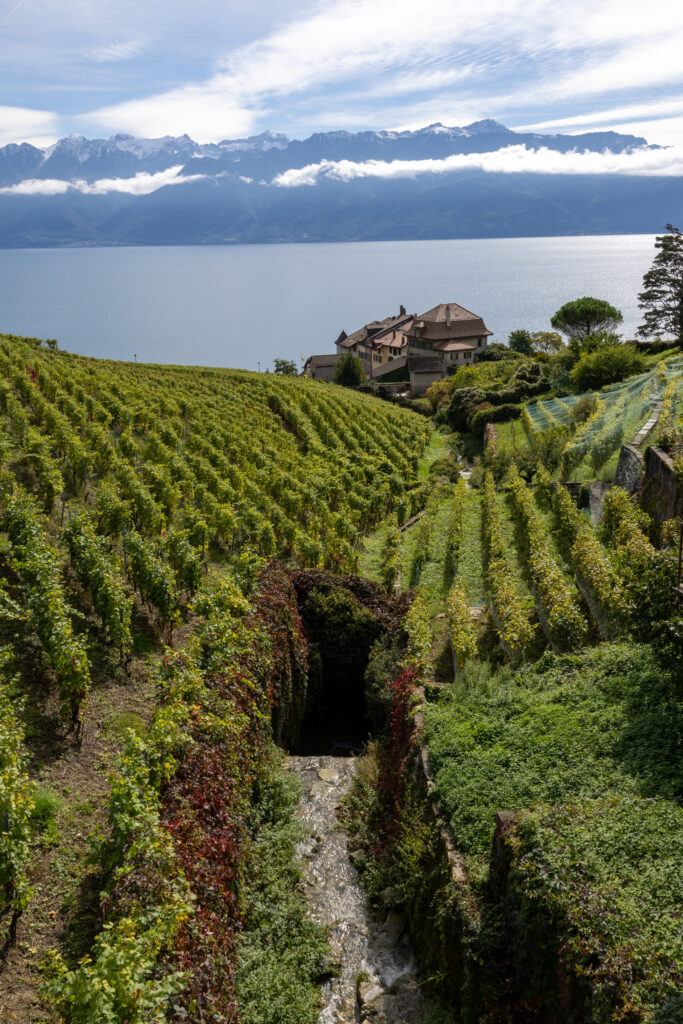
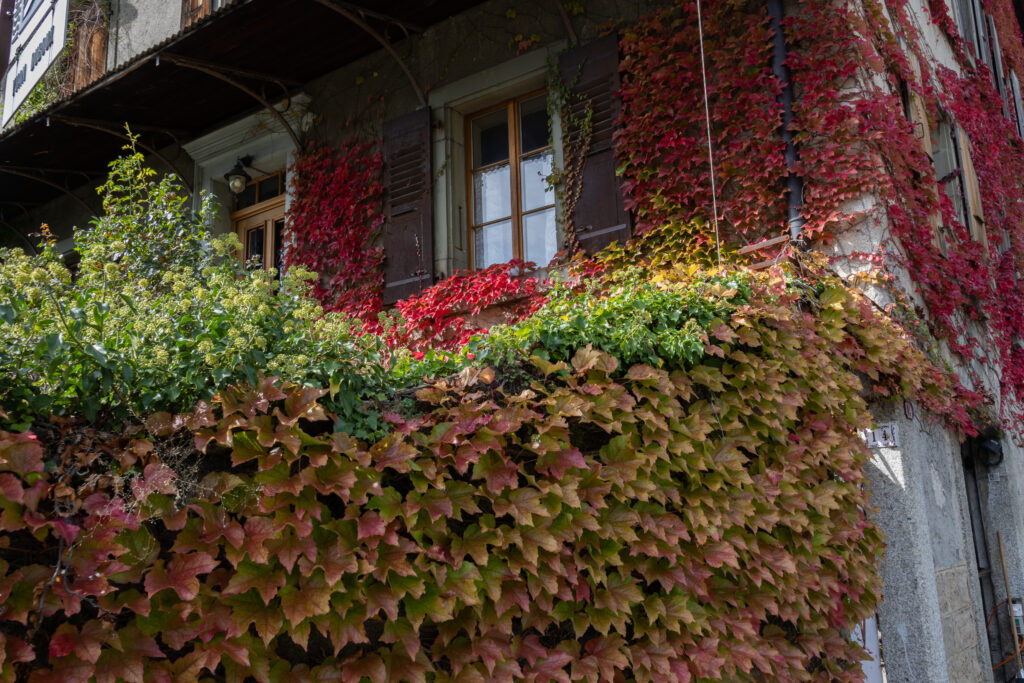
Overshadowed by its giant wine producing neighbors, Italy and France, Switzerland remains largely known for its chocolate or cheese. Yet wine production throughout Switzerland dates back to the Roman Empire. However, only 1% of Swiss wine is exported worldwide. Tasting Swiss wine is something almost exclusively possible while visiting Switzerland!
The Lavaux vineyards were granted the title of World Heritage Site by UNESCO in 2007, considered a living heritage through its centuries-long interaction between people and their environment. Pathways are interwoven among 11th century vineyards with the occasional gecko peering behind stone ruins.
Besides breathtaking trails and nearby lake for swimming, the regions offers a variety of experiences to make your stay unique, such as Swiss Wine Therapy. This small spa offers visitors a chance to taste local wine from a copper bathtub amid the vineyards, soaking in bubbles and looking straight ahead at the Swiss Alps and lake.
From early April to the end of October, the vineyards may also be viewed as a passenger on the Lavaux Express, a small train that passes through the enchanting villages of the surrounding vineyards. Two different loops are available, lasting approximately one hour (Lutry – Aran – Grandvaux – Lutry OR Cully – Riex – Epesses – Dézaley – Cully), and additional experiences to taste wine may be reserved here.
Explore the eerie dungeon of the Château de Chillon

Located about 30-minute walking distance from Montreux is the Château de Chillon, Switzerland’s most visited historical monument.
The castle was made famous in part thanks to Lord Byron’s poem The Prisoner of Chillon, inspired from the life of François Bonivard. A nobleman with an unwelcome habit of political activism, Bonivard was imprisoned in the dungeon of Chillon Castle for his unfailing commitment to the independence of Geneva, vocally opposing the House of Savoy’s efforts to control the region. When describing his time from 1530 – 1536 in prison, Bonivard is quoted as having “wore away the floor, creating a path in stone”.
Various offers for entrance fees and opening hours may be viewed here: https://www.chillon.ch/en/visit/
Cruise across the lake in a turn of the century steamboat
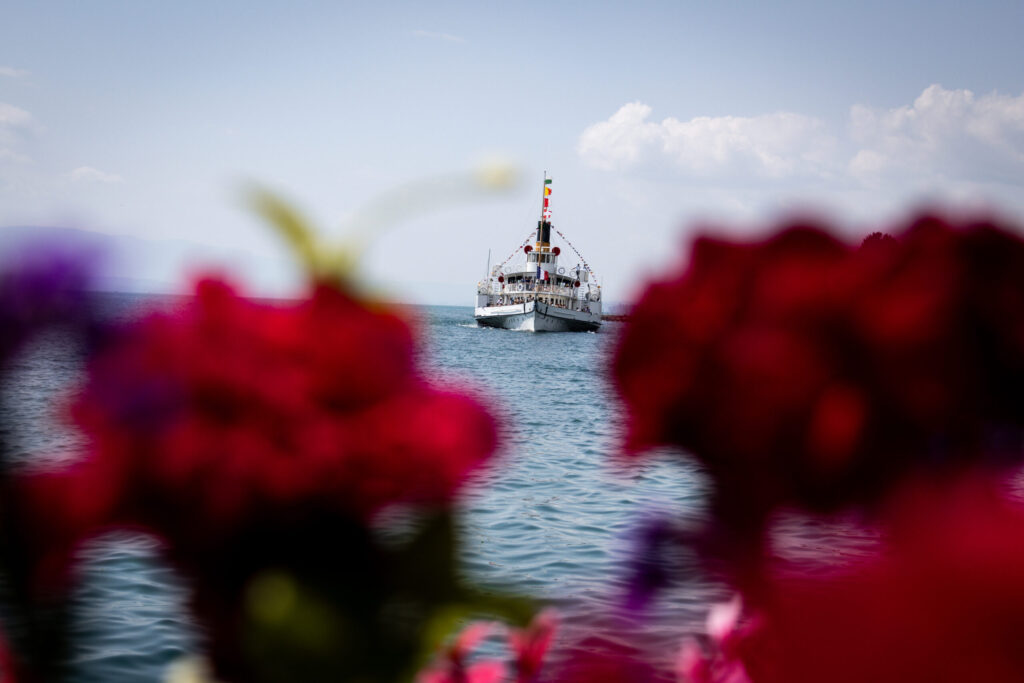
The Compagnie genérale de navigation (CGN), is a truly unique experience when visiting Switzerland. In the summer, steamboats within the CGN’s Belle Epoque fleet venture across Lake Geneva (read about our experience here), while lunch and fondue dinner cruises may be reserved during the winter.
The CGN’s aim is to preserve its Belle Epoque fleet as close to the original appearance as possible, a pride in cultural heritage landing the restoration of the steamboats an award by Europa Nostra in 2014. The steamboat departing from Montreux is the oldest among the CGN’s line, commissioned in 1904!
Eight boats journey across Lake Geneva between France and Switzerland (of which a virtual tour of the interiors may be viewed here). A helpless romantic with a penchant for experiences reminiscent of another time period, a voyage abord an early 1900s steamboat is the way to my heart.
Timetables and tickets for your cruise across Lake Geneva may be accessed here: https://www.cgn.ch/en/horaires-billets
